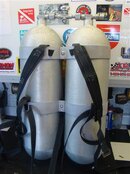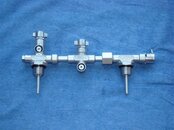Is it possible to connect the two tanks and only use one regulator or do you need separate regulators, one for each tank?
OK, so you need two regs, do you use an alternate air source/octopus (four 2nd stages)?
Hehe, you guys must be banging your heads in the wall when reading this...
OK, so you need two regs, do you use an alternate air source/octopus (four 2nd stages)?
Hehe, you guys must be banging your heads in the wall when reading this...






